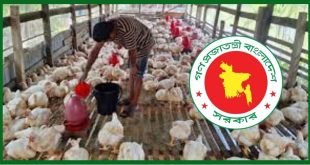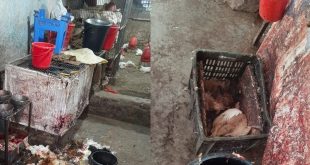One of the most critical factors in global feed and food production is the prevention of post-harvest losses. The post-harvest system encompasses the delivery of a crop from the time and place of harvest to the time and place of consumption, ideally with minimum loss and maximum efficiency. Even under optimal growing and harvesting conditions, immediate post-harvest losses are common. Prevention is the recommended method to avoid nutrient losses and mycotoxin contamination due to mouldy feeds. This means minimising the microbial spoilage from the time of harvest to the time when the material is finally used. Using MoldCid for this purpose protects the animals and increases the efficiency of feed production, thereby also reducing feed costs. As a result, the profitability of animal production increases.
Highly effective against moulds :Due to its lipophilic character, the propionic acid-based MoldCid is especially effective against moulds, making it the product of choice for feed preservation. MoldCid is also active at a neutral pH, which more closely matches the native pH value in grain and feed.
 A valuable tool to show the efficacy of MoldCid is the carbon dioxide test. This test measures the volume of CO2 formed by microorganisms in grain. As moulds grow, they consume oxygen from the air and produce CO2. The higher the amount of CO2, the higher the contamination with moulds in the substrate. As shown in (figure -1), the application of MoldCid considerably decreases the CO2 production in grain, giving a clear indication that MoldCid reduces microbial activity and improves feed hygiene.
A valuable tool to show the efficacy of MoldCid is the carbon dioxide test. This test measures the volume of CO2 formed by microorganisms in grain. As moulds grow, they consume oxygen from the air and produce CO2. The higher the amount of CO2, the higher the contamination with moulds in the substrate. As shown in (figure -1), the application of MoldCid considerably decreases the CO2 production in grain, giving a clear indication that MoldCid reduces microbial activity and improves feed hygiene.
Health and cost-effectiveness: valid reasons to use MoldCid : Moulds in feed are a serious economic problem because they consume the main nutrients and affect the palatability of the feed. Losses of nutrients caused by moulds can be as high as 10 %. Especially the crude fat content of grains is affected by mould growth during storage, even more so than proteins and carbohydrates. Losses in metabolisable energy from maize may even reach 25 %, necessitating the use of additional costly sources of energy, for instance fat and oil, in the formulation. Preventing spoilage by the application of MoldCid will therefore save money and resources. Apart from nutrient losses, moulds also produce mycotoxins, threatening animal and human health. Many studies in the literature show the detrimental effects of mycotoxins on animal health and performance. The sensitivity for these effects depends on animal category, age, health status and also duration and level of exposure. Aflatoxins can be transferred into animal tissues and therefore pose a serious risk for the consumer (carry-through-effect). Preventing the build-up of Aflatoxins during storage by preserving the feeds with MoldCid will help to keep these dangers under control.
Protecting workers and equipment – without losing efficacy : The protection of staff and equipment is an important criterion when evaluating mould inhibitors. Companies often face the decision of investing in acid-resistant equipment or having to replace corroded parts regularly. Choosing the non-corrosive MoldCid, a unique blend of buffered propionic acid on a special carrier and propionic acid salts, solves this problem without losing efficacy. MoldCid has the added effect of avoiding chemical reactions between the acid and other ingredients in the feed. It guarantees a reliable and powerful preservation of grain and other raw materials – during harvest, in the feed mill and on the farm (Fig 2).
The protection of staff and equipment is an important criterion when evaluating mould inhibitors. Companies often face the decision of investing in acid-resistant equipment or having to replace corroded parts regularly. Choosing the non-corrosive MoldCid, a unique blend of buffered propionic acid on a special carrier and propionic acid salts, solves this problem without losing efficacy. MoldCid has the added effect of avoiding chemical reactions between the acid and other ingredients in the feed. It guarantees a reliable and powerful preservation of grain and other raw materials – during harvest, in the feed mill and on the farm (Fig 2).
Application tips : The preservation success depends on a variety of factors. The dosage rate has to be adapted to the type of raw material, moisture content and storage time. MoldCid should be applied before the grain is milled. If the preserved grain is stored outside, it has to be covered, but not before at least three days have elapsed to avoid the formation of condensed water. Regular sensory control is advisable to detect any spoilage in time. Often, not enough attention is given to the condition of the storerooms. One reason is the poor accessibility of the silos where the feed is stored. The hatch is usually at the top of the silo and routine hygiene inspections and manual cleaning procedures are difficult to perform. Cleaning hatches are also often not available. Condensation can form on the walls inside of silos and lead to the formation of isolated nests of moulds that may spread through the complete feedstock. For optimal feed hygiene, it is therefore essential to address raw material preservation and silo hygiene at the same time. The non-corrosive MoldCid is the ideal product to use for these purposes. No technical investments are necessary for application.
Conclusion : Grain preservation with MoldCid can make an important contribution to the improvement of feed hygiene, thereby furthering the production of healthy food. The reduction of mould-induced losses and the prevention of mycotoxin build-up helps to save raw materials, minimise costs, and increase the efficiency of food production.
Do you have any questions regarding successful and cost-effective preservation with MoldCid? Please contact:
Dr. Elisabeth Holl
Technical Sales
Dr. Eckel Animal Nutrition GmbH & CO. KG
Phone: +49-2636-9749-15
Email: e.holl8< hier ein @ Zeichen ersetzen >8dr-eckel.de
 Agrinews24 কৃষির সাথে, কৃষকের পাশে
Agrinews24 কৃষির সাথে, কৃষকের পাশে





















